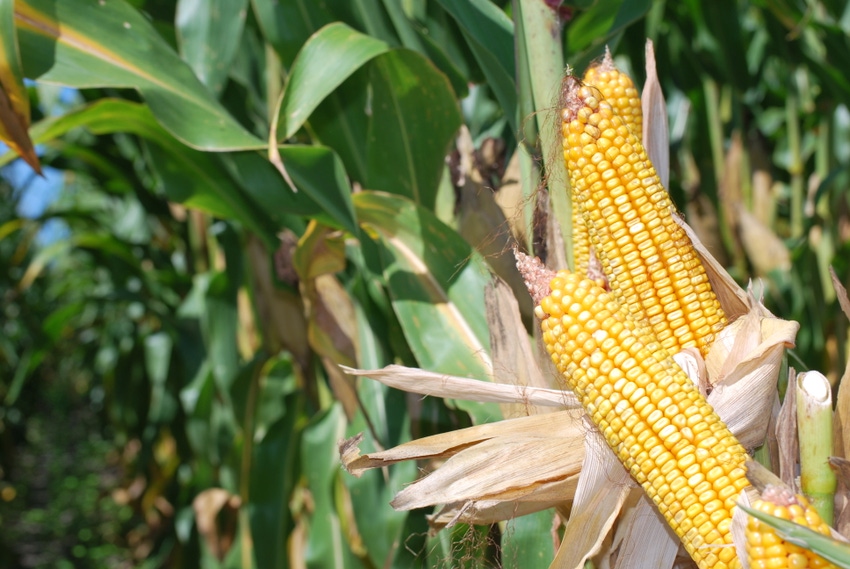November 28, 2017

Sunlight is critical for high corn yields if it is supplemented with adequate moisture. But that’s the rub: getting good sunlight when plentiful rainfall is accompanied by cloudy weather.
Many farmers in north Alabama recorded their best corn yields this year. It may be the best overall corn crop for the region and yet some irrigated growers were surprised that their yields weren’t higher. They are not complaining and very grateful as the bin-busting dry land yields more than offset the less than anticipated irrigated crop for some growers.
Nevertheless, a question asked by some of my irrigated growers, especially those putting the inputs and management in for high yields, was, “Why aren’t my irrigated yields higher especially considering the ideal rainfall we had this year?”
This year, the limiting factor for most of our high-yielding irrigated growers was sunlight. Full sunlight is needed for maximum photosynthesis. Photosynthesis is the process where the plant converts sunlight into sugars. These sugars are frequently called photosynthates or carbohydrates and are the energy source for the corn plant and grain. The frequent rainfall that blessed our dry land crop limited the sunny days for our irrigated corn. Still, even though some irrigated growers had lower than expected yields, they benefited from lower fuel costs by having to irrigate less.
Sunlight, or solar radiation, is measured in watts-hour per square meter. This year at Auburn, 22 percent less solar radiation was measured in June than average. June is when much of our corn was in the most sensitive stage of crop growth, flowering and early grain fill, when it was most susceptible to stresses such as insufficient sunlight, water or nutrients.
The reduced sunlight during pollination limited yield by decreasing the number of kernels per row and caused poor tip fill if the plant population was too high. The kernel weight also dwindled due to less solar radiation during early grain fill.
Dr. Dewey Lee, former University of Georgia Extension agronomist and one of the leading corn experts in the southeast, says, “In south Georgia, we had more cloudy than sunny days when the corn was silking. Twenty out of 30 days were cloudy and overcast during this critical time and really reduced the amount of solar radiation the crop received. In addition, we had the lowest growing degrees in the last four years at the same time. This resulted in a 10 to 20 percent reduction in yield in our irrigated well-managed fields. Poor tip fill was a common problem in these fields due to diminished sunlight.”
A common theory on increasing corn yield is to increase nutrients, particularly nitrogen and plant population. Unfortunately, growers with high plant population experience poor tip fill when solar radiation is limited during silking and early grain fill.
So, what is the seeding range growers need to strive for optimum yields?
I worked with Cherokee County farmer Nick McMichen this year on a corn seeding rate study. It showed that higher seeding rates actually decreased yields in a year with less solar radiation than normal. Three varieties (DeKalb 70-27, DeKalb 67-44 and DeKalb 64-35) were planted at 28,000; 32,000; 35,000; 38,000 and 42,000 seeds per acre. The field had subsurface drip irrigation and inputs were for high yields. The field had plentiful rainfall and did not have to be irrigated. The average of the three varieties was 232.01 bushels per acre at 28,000 seeds; 245.03 bushels per acre at 32,000; 248.24 bushels per acre at 35,000 seeds; 240.95 bushels per acre at 38,000 seeds and 235.04 bushels per acre at 42,000.
In our heavier soils of north Alabama, the maximum seeding rate for well-irrigated corn should be 36,000-38,000 seeds per acre. The optimum seeding for dry land growers should be in the 24,000-28,000 range. Farmers planting corn on bottomland close to our rivers with a shallow water table may be able to increase their seeding rate to 30,000. On sandy soils, especially the sandy soils in many areas of south Alabama, the ideal seeding rate would be 18,000-22,000 seeds per acre.
Lee adds, “There is good evidence that the yield potential for corn is 10 bushels for every 1,000 plants per acre. Unless a grower is striving for over 350 bushels per acre, their maximum seeding rate for irrigated corn should be in the 36,000-38,000 range. I would only recommend growers increase their seeding rate if they have fully developed ears with the kernels are developing to the tips of the ears at their present seeding rate and then only in slow increments, one or two thousand seeds per acre.”

Higher plant populations often result in poor tip fill in years with reduced sunlight. Three ears at bottom taken from a field with a seeding rate of 48,000. The three ears at top were planted in the adjoining field on the same day this year at 40,000 seeds per acre.
Eddie McGriff is the Alabama Extension Regional Agent in NE Alabama. He can be contacted at [email protected].
About the Author(s)
You May Also Like




